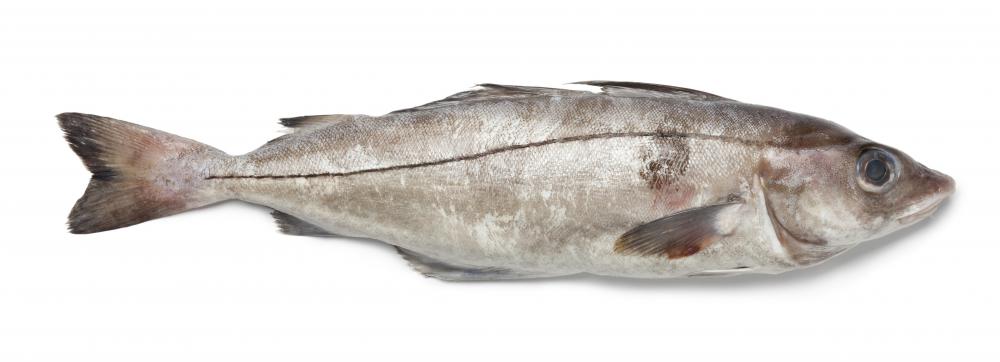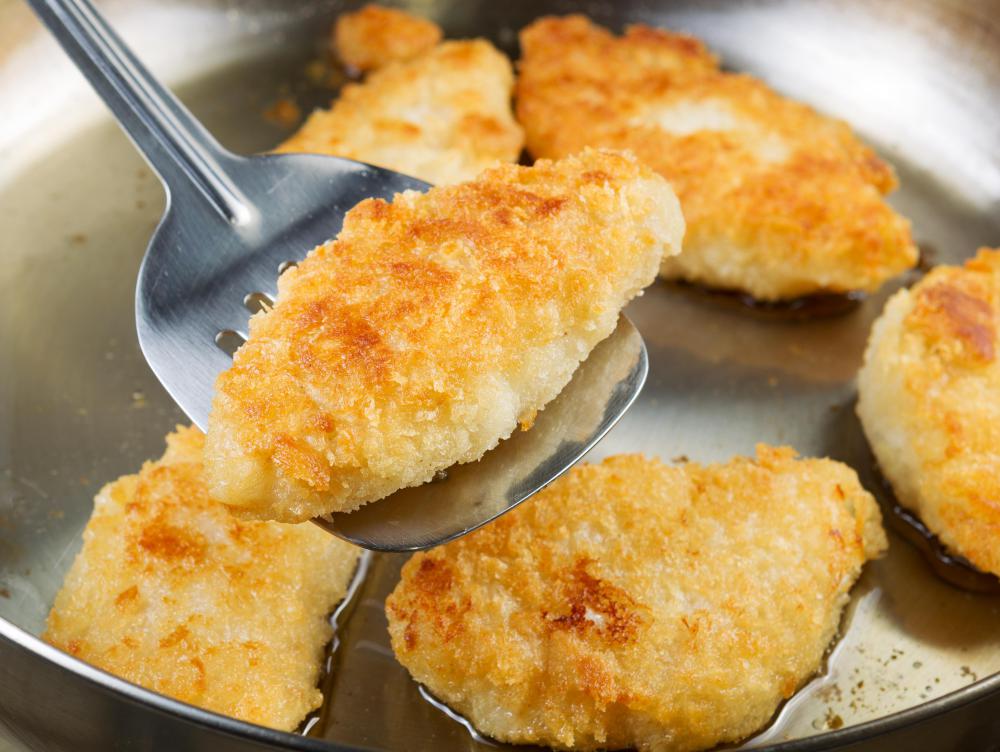At WiseGEEK, we're committed to delivering accurate, trustworthy information. Our expert-authored content is rigorously fact-checked and sourced from credible authorities. Discover how we uphold the highest standards in providing you with reliable knowledge.
What Are the Best Tips for Poaching Haddock?
Some of the best tips for poaching haddock, a firm white fish, include removing all of the bones before cooking and leaving the top of the fish uncovered by liquid when poaching, which can help the haddock hold together during the cooking process. While poaching haddock, it is also important to keep the liquid at a very low, gentle simmer, as boiling the fish can cause it to either fall apart or become tough. Seasoning the poaching liquid well can help to ensure that the fish is flavorful, and may even be useful in creating a sauce from the poaching liquid to serve with the haddock.
Eating fish that contains bones can often be tedious, and can make the dish less enjoyable no matter how well the haddock is prepared. To avoid this problem when poaching haddock, it can be helpful to remove all of the bones prior to cooking the fish. This can be done rather easily with a pair of tweezers. Gently pull up the main bone from the fish, trying to keep the smaller bones attached, and then remove any leftover bones with the tweezers.

While poaching is a relatively easy and healthy cooking method, it does require some attention. When poaching haddock, it is typically best to only add liquid to the pan until it reaches halfway up the fish. Covering the entire piece of haddock can cause the fish to move around too much in the pan, increasing the possibility of the fillet or steak falling apart. It can also cause the haddock to cook too quickly.

When poaching haddock, it is important to make sure the liquid does not reach a fast simmer or boil. Ideally, the poaching liquid should be only very lightly simmering, which is characterized by sporadic small bubbles in the liquid. Boiling the fish during the entire cooking time can cause it to become extremely tough, and allowing sporadic boiling during the poaching processes can increase the chances of the fish falling apart.

Unlike other cooking methods that allow the food to be seasoned directly, poached haddock gets most of its flavor from the liquid in which it is cooked. While some recipes call for seasoning the haddock directly before poaching, many seasonings simply fall right off the fish once it comes in contact with liquid. Flavorful cooking liquids are essential to a delicate, tasty haddock dish. Water can be seasoned with a variety of spices, or liquids, such as wine or milk which can be used to increase the flavor of the dish.
For an even more flavorful dish, the liquid used for poaching haddock can be used to create a sauce. A common way to do this is to add other ingredients, such as herbs or vegetables, to the liquid once the fish is cooked and blend them together. The poaching liquid can also be allowed to reduce once the fish is removed without any added ingredients and used to top the haddock.
AS FEATURED ON:
AS FEATURED ON:













Discuss this Article
Post your comments